Fact:
Energy storage had its best year for new deployments in 2022 across all market segments:
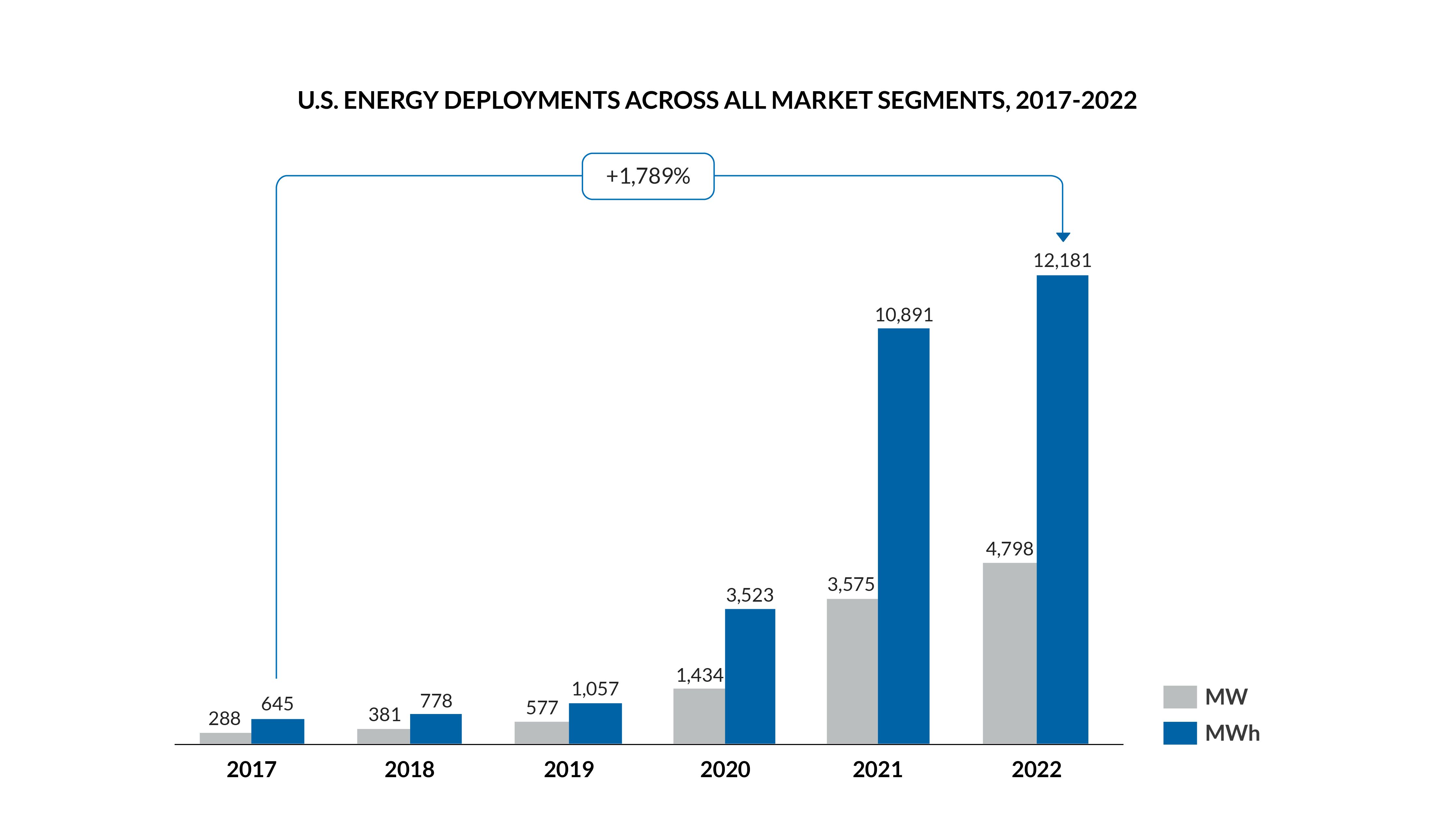
Following a 1,789% increase in deployments during the last five years, the forecast for energy storage in the U.S. throughout the next five years shows nothing but continuing growth.
A report from the American Clean Power Association (ACP) and Wood Mackenzie projects that between 2023 and 2027 the nation may add as much as 75 GW (75,000 MW) of energy storage to meet all-time high demand.
As 2023 sets another higher mark for domestic energy storage adoption, the U.S. growth rate is forecasted at a compound annual growth rate (CAGR) of more than 30% through 2027. This will result in growth across all three major segments:
- Grid-scale
- Residential
- Community, Commercial, and Industrial (CCI)
If they don’t already, energy storage systems (ESS) will soon have an impact on each of our daily lives in some way. So, before we explore the driving factors behind energy storage, let’s define it.
What is Energy Storage?
Electricity in its original form cannot be stored on any scale. Therefore, an energy storage system is used to capture and convert electricity into another form so that it can be stored for future use. This can be done utilizing a variety of technologies such as batteries, flywheels, compressed air, pumped hydro storage, and others.
With stored energy, an ESS helps stabilize a microgrid — a group of interconnected energy resources that serves as a single entity — by balancing energy supply and demand for increased efficiency.
Electricity storage provides a variety of further advantages:
- Reliability: An ESS provides backup power during disruptions, increasing the reliability of systems.
- Economic benefits: Energy storage can eliminate power outages which cost the U.S. economy $150 billion annually according to the Department of Energy. An ESS also saves consumers money, as low-cost energy can be saved and used during peak periods when electricity rates are higher.
- Environmental benefits: ESS efficiency and the integration of renewable energy sources reduce greenhouse gas emissions.
For more information, check out Understanding Energy Storage Systems - New Trends in Technology.
A Global Perspective
This impressive upward trajectory isn’t limited to the U.S.—the global energy storage systems market was estimated at a staggering $668.7 billion in 2024 and is expected to skyrocket to $5.12 trillion by 2034. That’s a projected CAGR of 21.7% from 2025 to 2034. Driving this surge are factors like the increasing integration of renewable energy sources, rapid advancements in battery technology, and rising demand for grid stabilization and energy efficiency.
With explosive growth both domestically and worldwide, energy storage is rapidly becoming a cornerstone of the future energy landscape.
Factors Driving Growth in Energy Storage Technology
Why is the energy storage industry now growing more rapidly than ever before? Haven’t energy storage systems provided benefits for years?
Yes — but their adoption is accelerating given a variety of factors:
Other Industry Growth
Energy storage is most commonly used in companies with electric vehicle infrastructure and renewable energy applications such as solar and wind. These industries are growing quickly as they strive to meet their ambitious goals.
For example, the Solar Energy Industries Association is aiming for solar to be 30% of all electricity consumed in the U.S. by 2030 — it is currently 3.4%. Similarly, the Biden administration is aiming to have a public network of 500,000 EV chargers by 2030 — there are currently 130,000. There is a lot of work to be done to achieve goals in these industries.
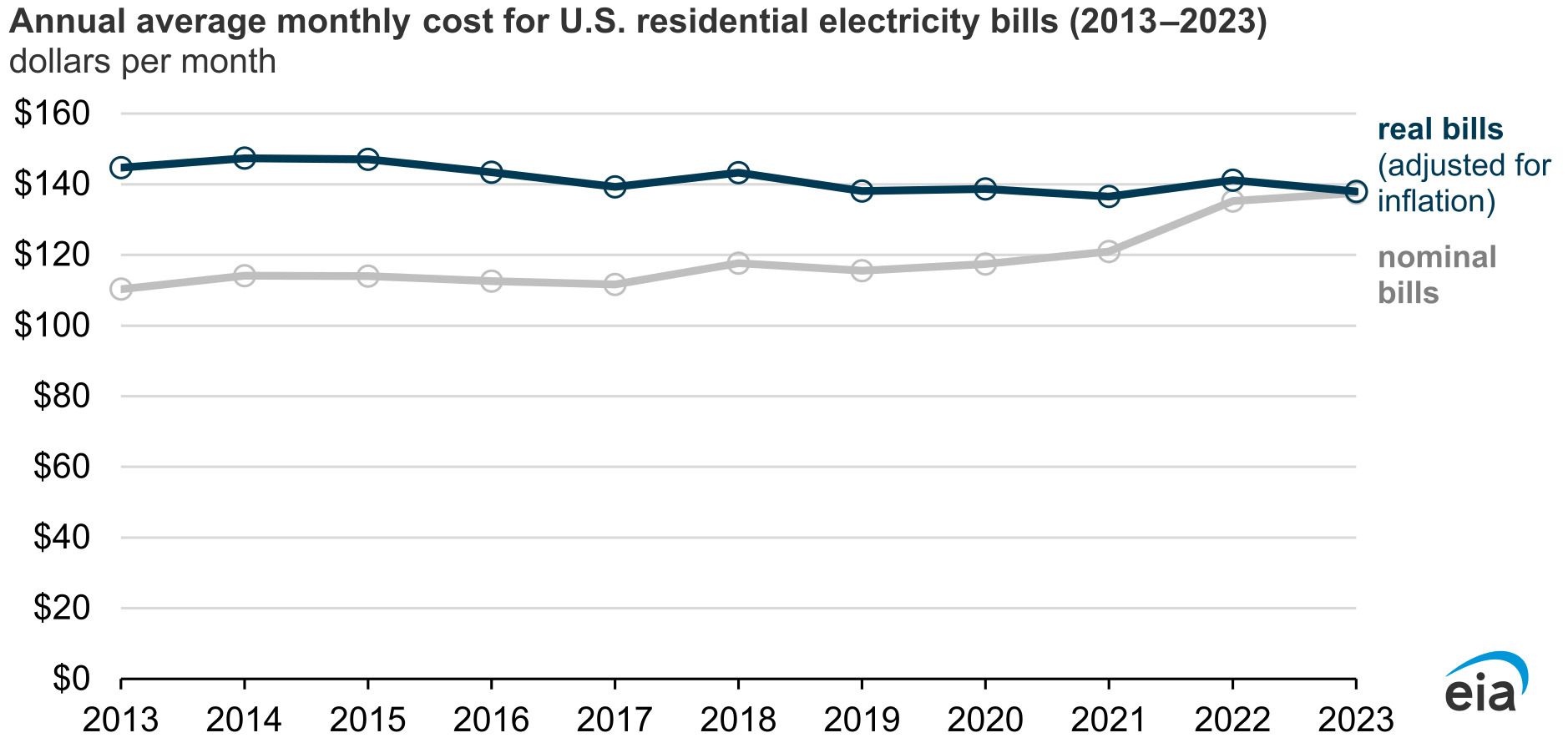
Referral url: https://www.eia.gov/todayinenergy/detail.php?id=61903#
But it’s not just about growth targets. Real-world events like hurricanes, ice storms, and other natural disasters have been driving up both the frequency and cost of power outages. After destructive hurricanes in 2020 and 2021, for instance, utility rates in regions like Louisiana saw significant increases. Residential electricity bills in the U.S. also rose by an average of 2% in 2023. These rising costs are pushing both consumers and businesses to find smarter ways to use and store energy.
This is where energy storage systems really shine. They allow for “energy time shifting”—storing electricity when it’s abundant and inexpensive, then using it later during peak demand when rates are higher. This not only reduces costs but also makes energy more readily available when it’s needed most. As a result, applications like electric energy time shift and electric supply capacity are becoming key drivers of ESS demand.
New projects will continue to place a great deal of pressure on the electrical grid. Renewable energy cannot support the grid in a meaningful way without an ESS. Storage is absolutely critical for grid modernization and advancement. Therefore, as these electricity-hungry industries grow, so will the need for energy storage.
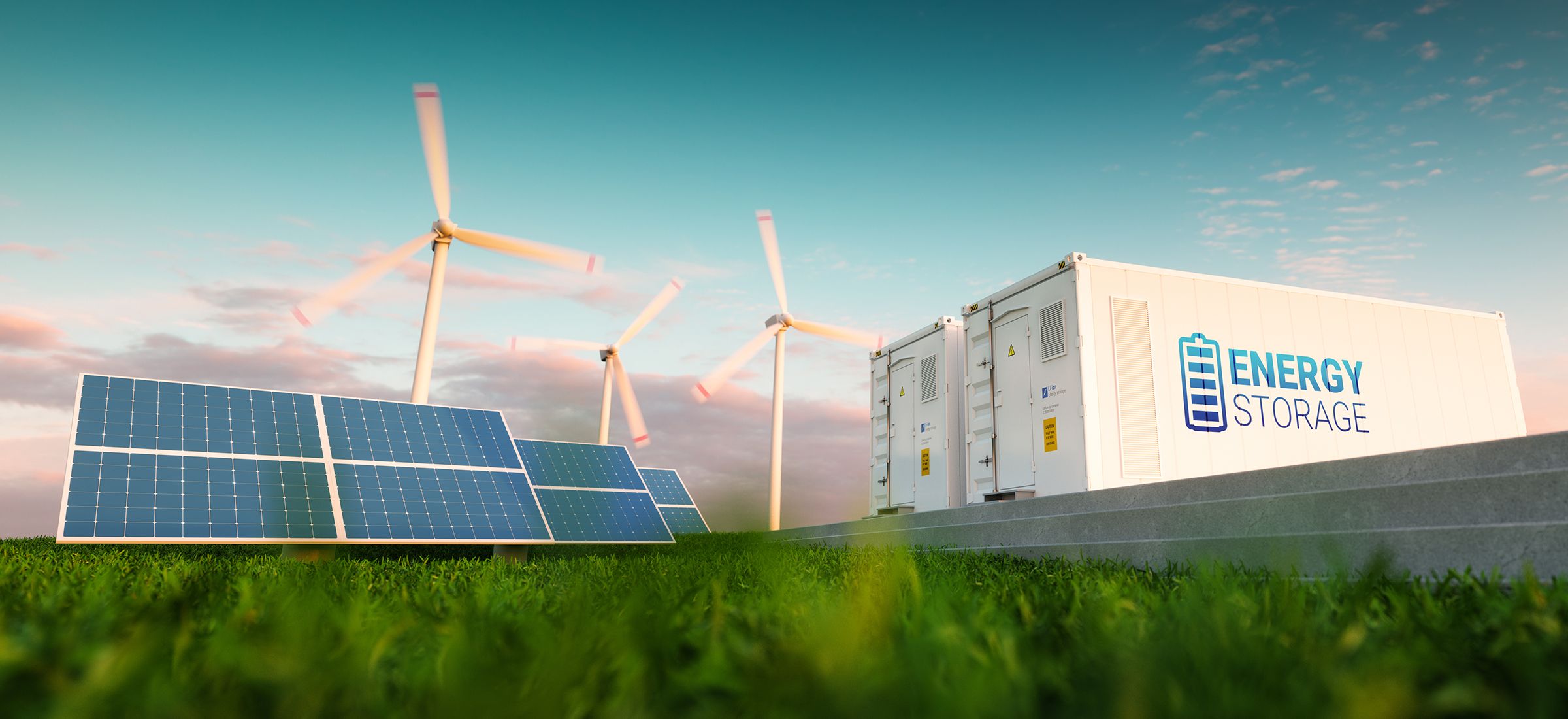
System Upgrades
In addition to new projects, energy storage is also a great option for upgrading current systems. For example, today more inverters are coming to the end of their 10-year lifespan as the solar photovoltaic (PV) industry matures. While this calls for a system upgrade, an entirely new setup is not necessary, as the rest of the system, such as the PV array, can last 25 to 30 years. It is in one’s best financial interest to take advantage of that extra useful life.
Given that upgrades are already being made, site owners are realizing that it is also in their financial interest to add an energy storage system as part of the process. Investment in an ESS is a great value-add opportunity that yields long-term savings, along with other benefits.
Government Incentives
A major breakthrough in the energy storage industry came when the Inflation Reduction Act (IRA) was signed into law in August 2022. The IRA will deliver $270 billion in tax incentives for energy production — and for the first time, large-scale, standalone battery storage projects in the U.S. are eligible for investment tax credits ranging from 30% to 70%. Here is an incentive breakdown:
- 30% - Meets registered apprenticeship requirements, and the developers and operators pay prevailing wages.
- +10% - Is constructed with equipment and materials produced in the U.S. Look for an increase in domestic manufacturing.
- +10% - Is in an “energy community” — a brownfield site of oil/gas/coal activities.
- +10% - Is paired with wind/solar and installed in a low-income community. Raises to 20% if the project is part of a low-income residential building or economic benefit project.
Previously, tax credits were only available for renewable plus storage systems. Developers would often have to explore partnerships with a larger entity to take advantage of incentives. Now, the process is much simpler and more accessible. Since the IRA was passed, billions of dollars in storage investments have been announced with billions more to come.
Market Growth and Global Momentum
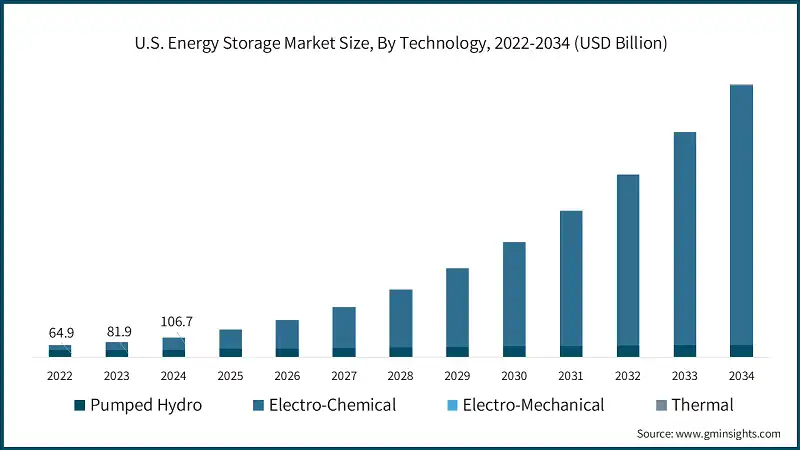
Referral url: https://www.gminsights.com/industry-analysis/us-energy-storage-market
The impact of these incentives is already apparent in the market’s rapid expansion. The U.S. energy storage systems market grew from $65 billion in 2022 to nearly $82 billion in 2023, and is projected to surpass $106 billion in 2024. These numbers reflect not only the effect of federal support, but also the growing adoption of cost-effective energy storage systems—especially as more homeowners and businesses take advantage of the IRA’s 30% credit for residential storage systems over 3 kWh. For a standard household energy storage system, this can mean savings of $3,000 to $5,000, making such upgrades more attainable than ever before.
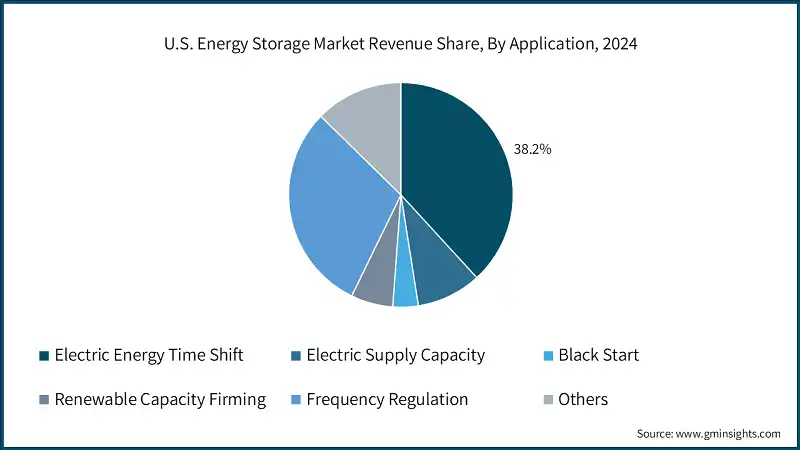
Referral url: https://www.gminsights.com/industry-analysis/us-energy-storage-market
But the momentum isn't limited to the U.S. Globally, countries like China and India are ramping up their own energy storage deployment to complement massive investments in renewable energy. For example, India recently approved major pumped hydro storage projects near Pune and Raigad, totaling nearly 2,800 MW. These projects highlight a worldwide trend toward diverse, large-scale energy storage as both established and emerging markets work to modernize their grids and support further renewable energy adoption.
Technological Advancements
Lithium-ion battery systems have been the most widespread form of energy storage for many years. However, reliance on a single source is risky as fluctuations in cost, supply and reliability could be detrimental. Therefore, the industry has evolved to produce lithium-ion alternatives such as iron flow, zinc, and sodium batteries which have emerged and started to scale up.
The growing popularity of electric vehicles (EVs) is a major factor fueling the demand for advanced battery solutions. For example, sales of EVs in European countries alone reached 310,000 units in December 2024—a 0.7% increase compared to the previous year. This surge in EV adoption is placing greater emphasis on the need for high-performance energy storage, prompting automakers and consumer electronics manufacturers to invest heavily in next-generation technologies.
As a result, companies and research institutions are not only improving lithium-ion technologies but are also moving new chemistries, such as sodium-sulfur batteries, from the laboratory to the early stages of commercial development. These advancements are positioning the industry to better respond to fluctuating demand and diversify the available storage options.
Furthermore, innovations across a wide range of technologies have provided reliable alternatives to battery energy storage systems (BESS) entirely. This has helped the industry respond to increased demand by creating multiple potential methods for success. The Energy Storage Association divides ESS solutions into five main categories:
- Batteries: Electrochemical cells convert chemical energy into electrical energy. For more information, check out Battery Basics.
- Thermal: Heat or cold is captured in a medium to create energy on demand.
- Mechanical: Kinetic or gravitational energy is harnessed and stored.
- Hydrogen: Excess electricity is converted into hydrogen via electrolysis and stored until it is re-electrified.
- Pumped Hydropower: Large reservoirs store energy as water.
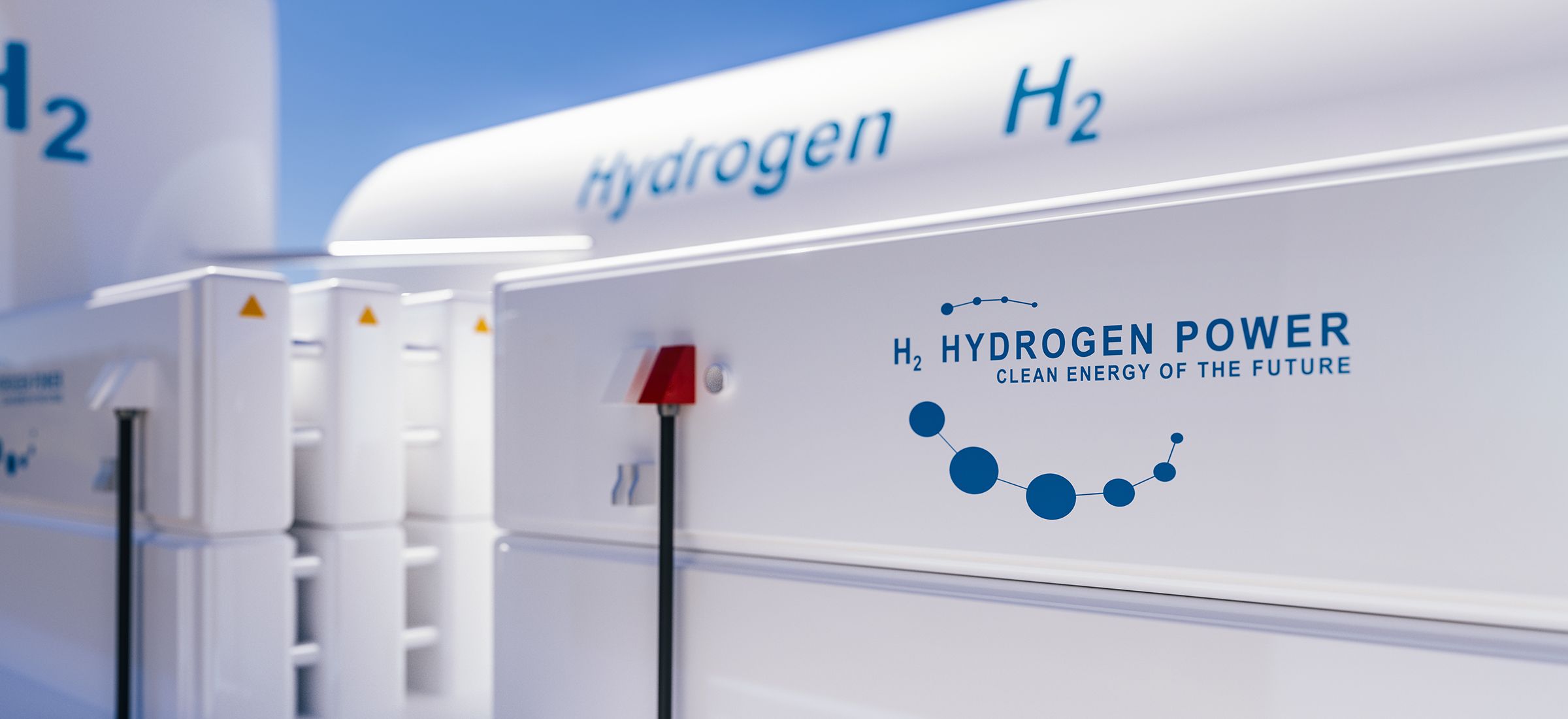
Emerging Trends and Innovations
As demand for energy storage surges across sectors such as electric vehicles, renewables, and grid applications, new technologies are reshaping the landscape:
Solid-State Batteries: These offer rapid charging, higher energy density, and improved safety, reducing risks like leaks and fires. Major industry players are scaling up production to meet anticipated needs.
Gravity-Based Storage: Mechanical solutions, such as gravity energy storage, utilize excess electricity to lift heavy weights (like sand or industrial materials). When energy is needed, these weights are released, converting gravitational potential energy back into electricity. This approach provides a sustainable and cost-effective alternative to traditional battery systems, with companies worldwide piloting new designs that use readily available materials.
Repurposed and Second-Life Batteries: As electric vehicle adoption grows, there is a rising trend of giving used batteries a “second life” in stationary storage. These batteries, though no longer ideal for vehicles, retain enough capacity for grid or backup applications, reducing both costs and waste.
Advanced Monitoring and Controls: The integration of technologies such as artificial intelligence (AI) and machine learning (ML) is improving battery management. Real-time monitoring of thermal management, charging status, and overall health increases safety, extends battery life, and optimizes performance.
Focus on Sustainability
In response to growing concerns over the environmental impact of battery production, manufacturers are increasingly turning to sustainable materials and processes. Innovations like gravity-based storage, as well as advancements in recycling and repurposing, are helping companies shrink their carbon footprints while meeting cost and performance goals.
These technological advancements not only diversify the options available for energy storage but also support the industry’s ability to meet rapidly increasing demand, adapt to fluctuating supply chains, and align with broader sustainability goals.
Industry Leaders and Key Players
As the energy storage market matures, several prominent companies are emerging as industry leaders, driving innovation and shaping global trends. These organizations offer a wide array of energy storage solutions, from batteries and thermal storage, to mechanical and hydrogen systems, catering to an increasingly diverse array of customers.
Notable global players include:
BYD – Known for its expansive product portfolio and global reach, BYD has built a solid reputation by offering both standardized and customized energy storage solutions tailored to various project needs.
General Electric – With decades of expertise in power systems, GE continues to expand its footprint in both grid-scale energy storage and integrated renewable energy projects.
LG Energy Solution, Samsung, and Siemens – These technology giants leverage their deep manufacturing capabilities and R&D investments to deliver cost-effective and reliable storage solutions across sectors, including electric vehicles and grid support.
Panasonic, Toshiba, and Hitachi Energy – Building on their histories of innovation, these companies are advancing next-generation battery technologies and scaling storage deployments worldwide.
A robust ecosystem of specialists—including ABB, Johnson Controls, Voith, McDermott, and Burns & McDonnell—also plays a vital role in system integration, project development, and niche applications.
As demand continues to soar, expect these leaders, alongside emerging innovators, to fuel the rapid evolution of the energy storage landscape—setting the pace in both established and growing markets.
Challenges Remain
While it is clear that the energy storage industry will experience substantial growth in the immediate future and for years to come, the ability to progress will likely be determined by the following factors:
Supply Chain
Volatility in supply continues to affect almost every industry, and energy storage is no exception. While demand for battery metals such as lithium increased over 30% in 2022, supply was hindered by the war in Ukraine, COVID-19 in China and inflationary pressures. In 2023, sustained demand will push manufacturers to establish economies of scale to improve prices, production and delivery. Creating a diversified and resilient supply chain is critical to industry growth.
Supportive government regulations—across both developing and developed nations—are helping to ease supply chain pressures and lower prices for energy storage systems. Affordable labor costs in certain regions have further contributed to decreasing system prices, making energy storage more accessible to cost-sensitive groups, including those in the electric vehicle and stationary storage sectors. Major companies like General Electric, LG Energy Solution, Siemens, and Samsung are keenly targeting these segments as the market matures.
Not only are these solutions cost-effective, but companies in regions like India are already piloting them with a focus on sustainability and resource efficiency. Such innovations are helping to meet demand for economical and environmentally friendly energy storage solutions.
Costs
While alternative technologies are on the rise, the cost of lithium-ion batteries remains a key point given their footprint in the energy storage industry. The average price of a lithium-ion battery pack dropped more than 80% from 2013 to 2021, promoting major growth. However, a 7% cost increase in 2022 interrupted a decade of decline. Lithium-ion prices are forecast to remain fairly stable in 2023 before declining again. And the emergence of cheaper and/or longer duration alternatives may cool high demand.
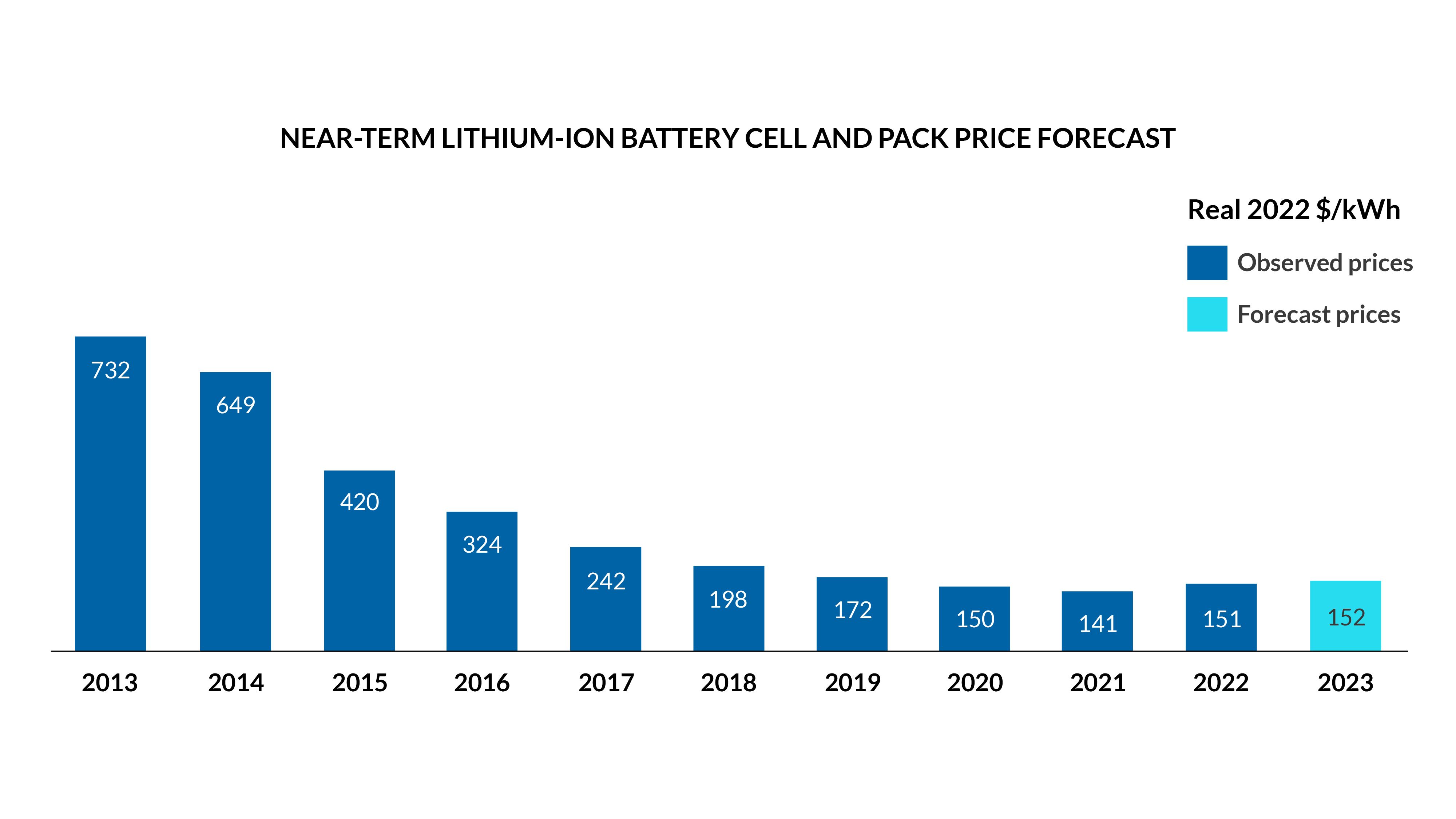
Stakeholder Behavior
New policies, technologies, and challenges make the energy storage industry a fast-moving environment. In response, stakeholders are frequently changing how they do business to adapt to the latest trends and capitalize on business opportunities. This creates a degree of uncertainty, which is only increased by the current economic and supply chain environment. Willingness to take risks will influence the potential for significant change in the industry moving forward.
Conclusions
Energy storage has grown on the coattails of renewable energy markets. Now, it is stepping to the forefront as many industries realize that energy storage is absolutely critical for reliability, regulation, and grid modernization.
An ESS can provide generation, transmission, and/or distribution. It can provide cost savings, improve reliability, and integrate new sources while reducing environmental impact.
The benefits are clear, and they are not going unnoticed as incentives and investments continue to pour in.
The industry will continue to move forward, but just how far will be determined by every stakeholder’s ability to predict, manage, and overcome challenges.
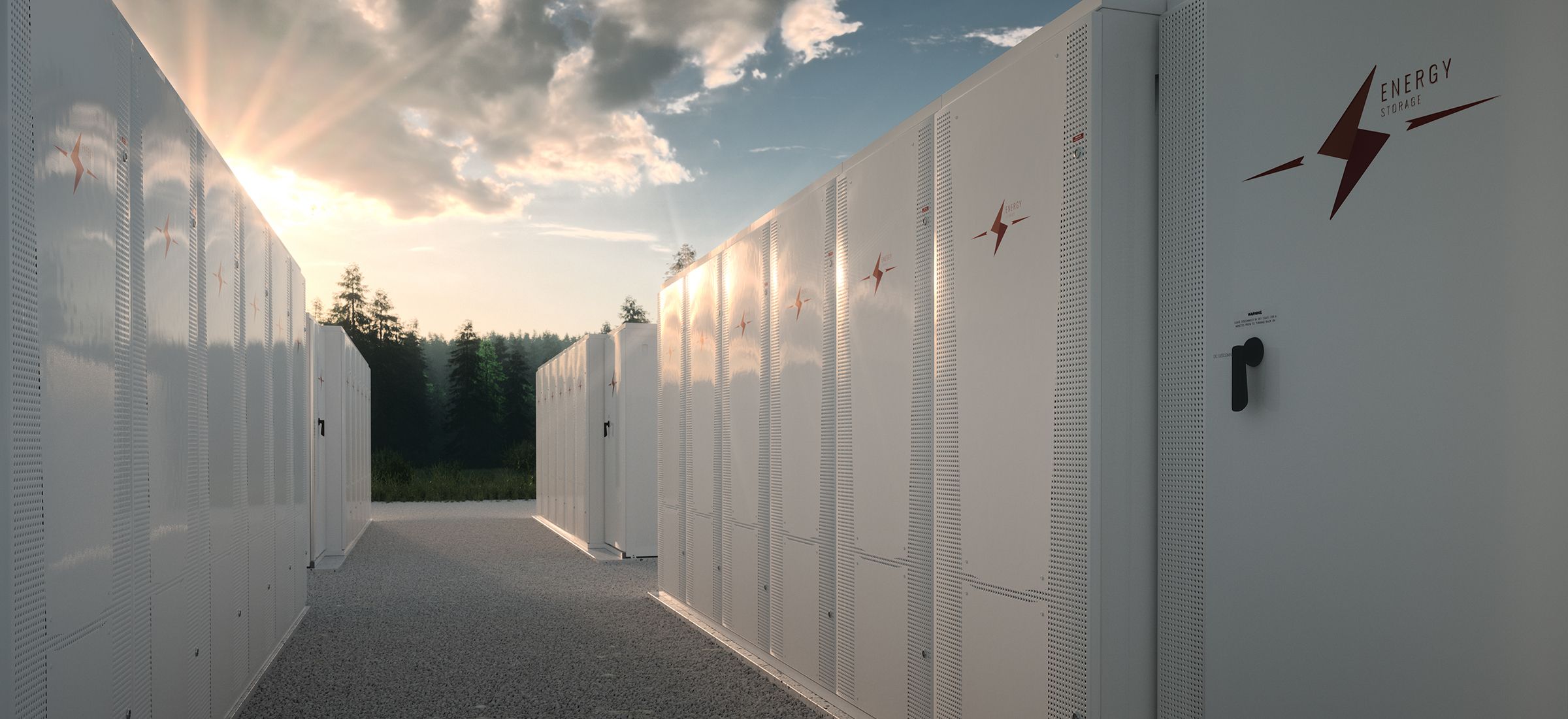
How c3controls Can Help?

As more energy storage systems are manufactured and installed, quality electrical controls will remain a key component of the ESS supply chain for all segments. Electrical controls include:
- Miniature Circuit Breakers (MCBs)
- Disconnect Switches
- Contactors
- Pilot Devices
- Control Panels
- & much more!
c3controls is ready and able to assist, by delivering the world-class products and services necessary for producing all types of energy storage systems.
----------------------------------------
Disclaimer:
The content provided is intended solely for general information purposes and is provided with the understanding that the authors and publishers are not herein engaged in rendering engineering or other professional advice or services. The practice of engineering is driven by site-specific circumstances unique to each project. Consequently, any use of this information should be done only in consultation with a qualified and licensed professional who can take into account all relevant factors and desired outcomes. The information was posted with reasonable care and attention. However, it is possible that some information is incomplete, incorrect, or inapplicable to particular circumstances or conditions. We do not accept liability for direct or indirect losses resulting from using, relying or acting upon information in this article.
ISO 9001:2015
Certified
17+ Million Product
Configurations
Lifetime
Warranty
Guaranteed
Same-Day Shipping
Advantage Pricing
Save Up To 40%
c3controls Headquarters, USA
664 State Avenue
Beaver, PA 15009
